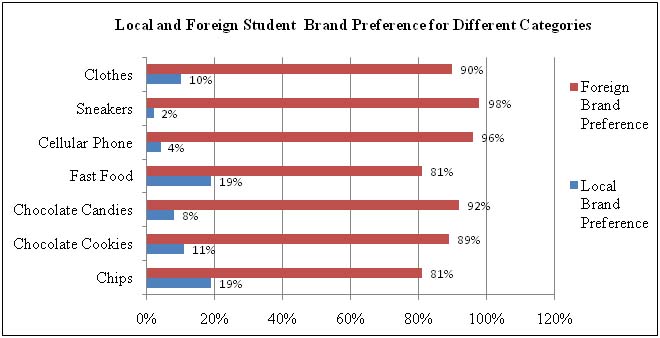 Disclaimer: This article’s intent is not to bash our local shows. Rather, it serves as a comparison and hopefully see where they can be improved upon.
Disclaimer: This article’s intent is not to bash our local shows. Rather, it serves as a comparison and hopefully see where they can be improved upon.
“I’m so in love with Gong Yoo in ‘Goblin!’” “Find me an oppa, please! I want him to be my namjachingu.” “Sie sind das Essen und wir sind die Jäger!” “Animé Con next week!”
As an otaku, K-Pop K-drama (Korean pop Korean drama) fan, cosplayer and enthusiast of all things Japanese, statements like these were very familiar to me throughout high school. Majority of my friends were interested in the same things, so when I made new friends from the lower batch, I was puzzled when they said things like, “Ang ganda talaga ni Liza, sana kung tinitigan ko siya everyday, maging ganyan rin ako;” “Oh my god, si McCoy talaga, haiz. That last episode broke my heart talaga;” and “PBB feels!”
Who and what are they talking about?
It never occurred to me that I had never watched a Filipino television show. Sometimes, I’d pretend I knew what they were talking about. I’d even sing the “Born For You” song (I only knew it because it was my yaya’s ringtone).
When I started watching, I couldn’t help but feel a sense of national pride that a lot of people watch local TV shows; and that some even reached international recognition! Filipino shows excel at slapstick comedy as well as hugot and kilig (“Dolce Amore,” “Forevermore” and Aldub’s “Kalyeserye” part in “Eat Bulaga”) given the natural expressiveness of the Filipino language. I chose the teleseryes I watched. I also remember how happy I was when “Heneral Luna” became known worldwide, with its iconic scenes and great storytelling.
However, when it came to the shows my yaya (and classmates’ yayas, cousins’ yayas) watched, it was a bit underwhelming.
My project for Quantitative Research last year was to find out the percentage of students in my school who preferred foreign brands over local brands in different categories. The statistics are disappointing but not unexpected. After all, I belong to the greater percentage that prefers foreign brands. It’s no secret that Filipino teens, especially those in the Tsinoy community, prefer foreign shows.
What is the cause of all this? Why do students prefer K-drama and anime to teleseryes? Well, aside from the natural appeal of the actors and actresses and Filipino colonial mentality, here’s why.
Stereotypes
While K-drama tends to break stereotypes on race, gender and social status, Pinoy teleseryes tend to reinforce them. The poor, ugly girl who is a victim of bullying gets a makeover and attracts the gangster guy or the son of a rich businessman, who is probably engaged to a beautiful but spoiled maldita girl. Rivalry ensues, with the poor girl getting slapped a lot, screamed at, etc., etc.
Or an extra-marital affair story complete with switching of babies in the hospital room; or the man has another family and both coincidentally and conveniently meet each other even though he has moved to another country to leave his past behind.
Don’t forget the “Wag Ka Nang Umiyak” soundtrack playing as the protagonist’s parents die in slow motion, slaughtered by men in leather jackets. “…Kung walaaaa ka nang maintindihan…” and the multiple “Twilight-esque” face close-ups in any dramatic scene that is very hard to take seriously.
On YouTube, search “If the Flash/Descendants of the Sun/Spiderman (or any show you know) was made in the Philippines” to see what I mean about stereotypes. Not to say that Korean dramas don’t have their own stereotyping.
There’s the dramatic “don’t go” wrist grab, evil mother-in-law, a lot of shouting, the ex-girlfriend of the male lead who went abroad and returns to Korea, and the female lead’s unfortunate accident (usually getting hit by a car, accompanied by a slow motion close-up death scene and followed by the obligatory hospital scene).
The difference is that Koreans know when a trope gets stale and over-used. As such, they decide to either improve on it, poke fun at it, or make a new trope to spice up their dramas.
In “Coffee Prince,” a tomboy working at a coffee shop that only hires men falls in love with the man who questions his sexuality because he thinks she’s a boy. It’s not a hundred percent original (guy falls in love with girl who looks like a guy trope), but they were able to improve it by adding slice-of-life cafe scenes and fresh humor, as well as reflecting the situation of some Korean youths who have to support their families by working. In “Weightlifting Fairy Kim Bok Joo,” the female lead pursues a traditionally male hobby: weight-lifting. The list goes on.

Content
What amazes me about K-dramas is the depth they give to each character. They flesh out a character’s backstory, give them hopes and dreams, likes, dislikes and quirks that make a character feel more human and unique. K-dramas can even make a story revolving around simple things like athletics teams in school exciting! They can even reflect the reality of their culture in their dramas. For example: Koreans have a lot of pressure on them to do well in school, as well as be musically inclined, talented and active all at the same time.
They’re also realistic, where antagonists secretly discuss their plans with a group of accomplices instead of loudly announcing it to themselves as they “casually” lounge in their extravagant living room in formal attire (because rich usually equates to evil in teleseryes) followed by an exaggerated evil laugh.
I also love how Japanese animes promote loyalty to family and friends (it’s why you always hear the word nakama in Japanese shows) as well as cherishing moments and what’s important in life.
When I was younger, my parents didn’t let me watch Filipino shows (or huana tsut as they called it) because they were afraid I’d get influenced and misbehave. Probably because of their content.
Quality over quantity
Episodes don’t come out every night because the producers and writers review audience reactions, comments and remarks, then think about what to do next, make drafts and revise!
“Game of Thrones” makes audiences wait for a year at a time for the next season, which gives plenty of time for people to catch up on what they missed, discuss, make fan theories, make fan videos, increase engagement and promote the show.
In contrast, a lot of teleseryes involve over-acting (i.e. screaming), which can make watching them a laughable experience.
Those three are the areas that I believe local shows can definitely improve on. We have good actors and actresses. Perhaps directors and writers are just afraid to experiment with different formulas? Some are even resorting to doing remakes of popular K-drama shows.
The Philippine entertainment industry definitely has potential. To the Filipino screenwriters out there, don’t be afraid. We’re rooting for you, and we know you can create amazing original material. #Puso!
